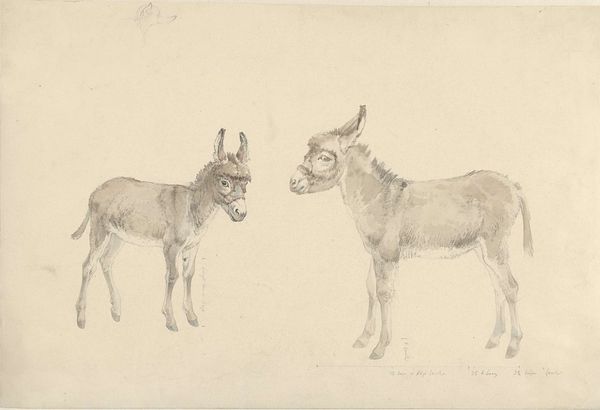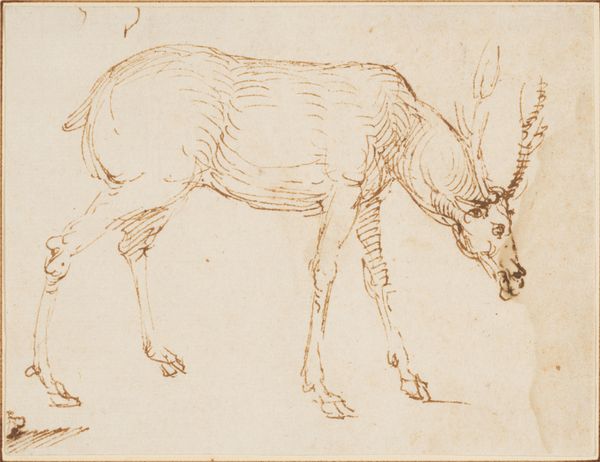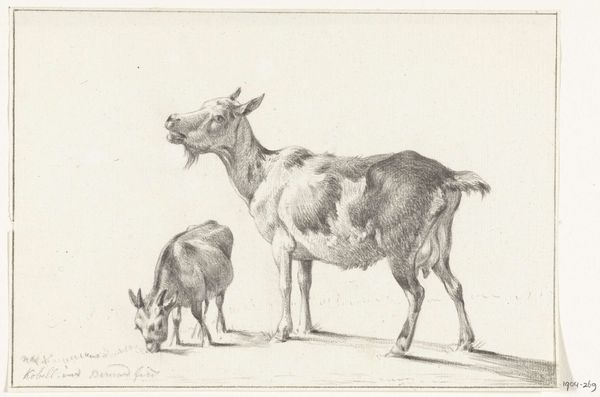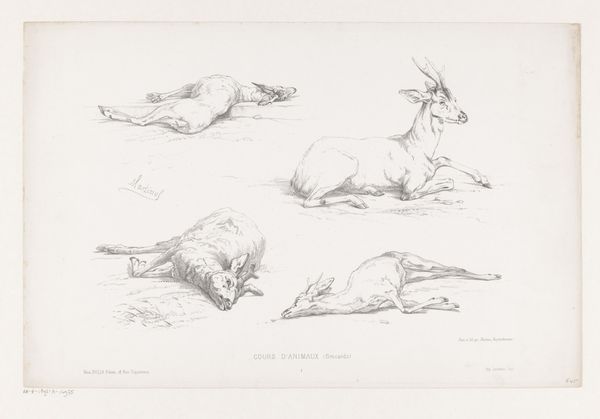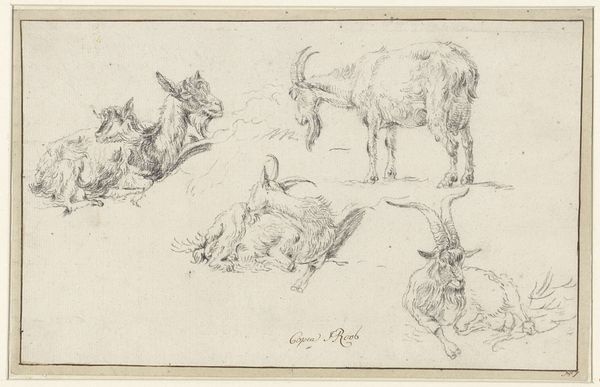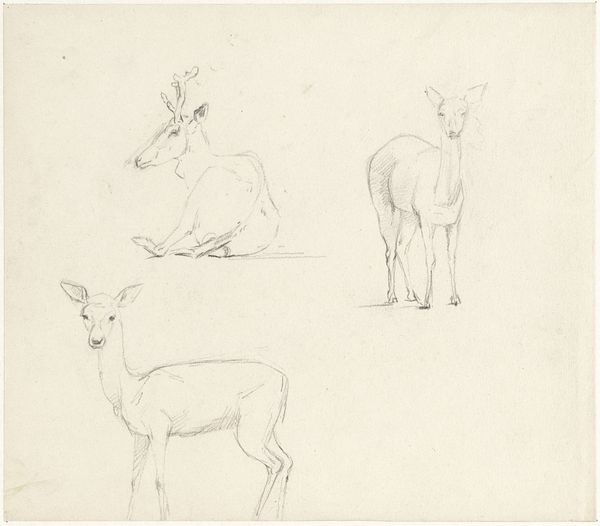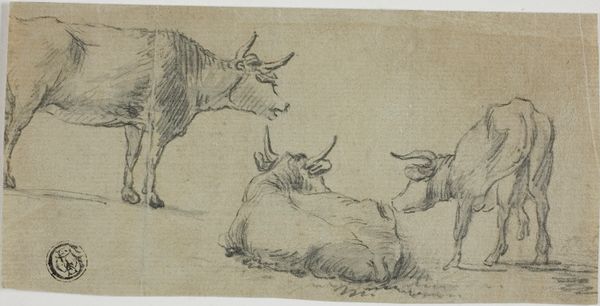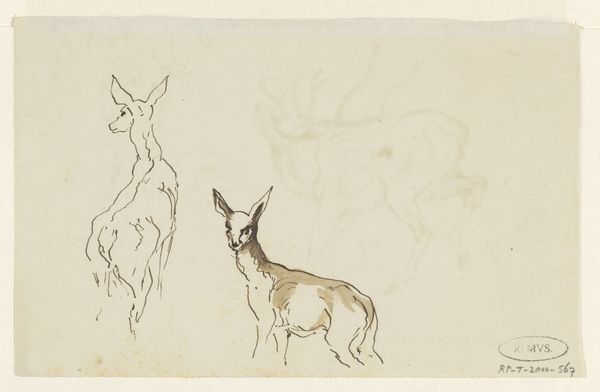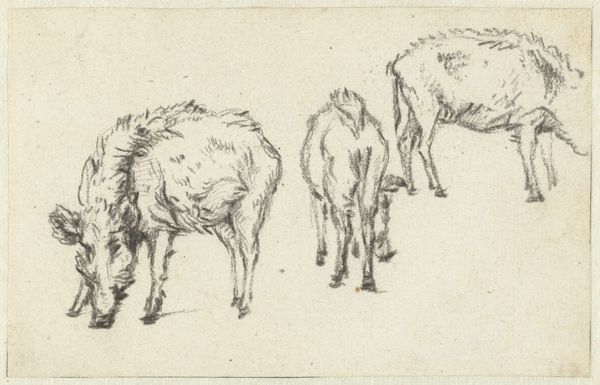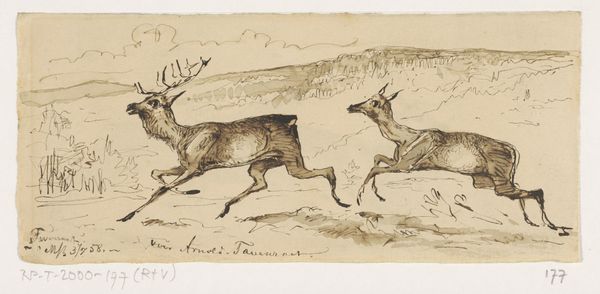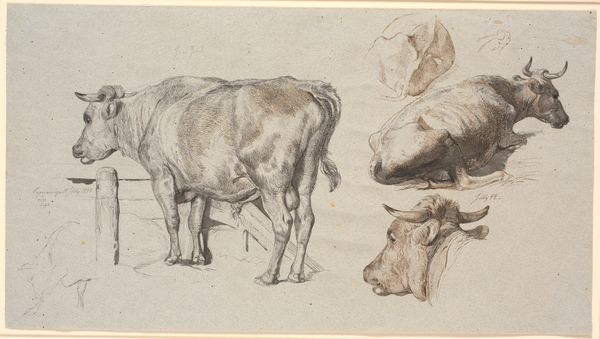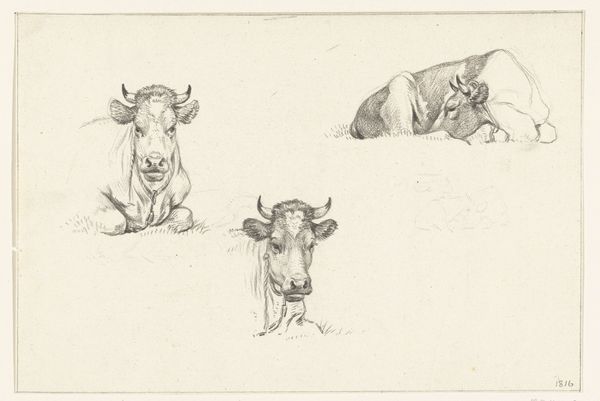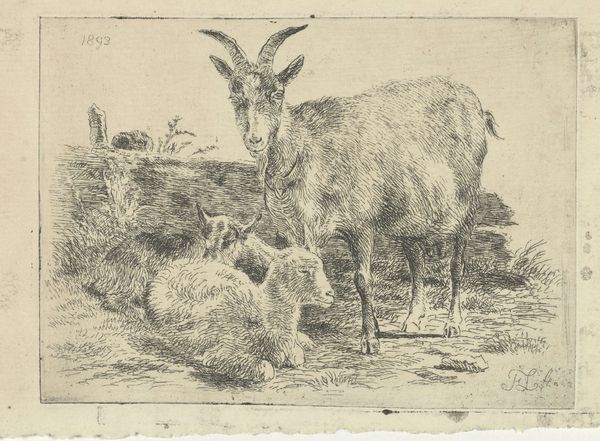
drawing, pencil, pastel
#
landscape illustration sketch
#
drawing
#
imaginative character sketch
#
quirky sketch
#
animal
#
pen sketch
#
landscape
#
figuration
#
personal sketchbook
#
pen-ink sketch
#
pencil
#
sketchbook drawing
#
pastel
#
storyboard and sketchbook work
#
sketchbook art
#
fantasy sketch
#
realism
Dimensions: height 198 mm, width 234 mm
Copyright: Rijks Museum: Open Domain
Jan Dasveldt made this drawing, "Studies van een hert" or "Studies of a Deer" in the Netherlands sometime in the late 18th or early 19th century, using graphite and colored chalk. Dasveldt's study exemplifies a cultural shift toward scientific observation. During this period, the Dutch Republic saw a burgeoning interest in natural history. Artists played a role in documenting the natural world, contributing to the era's scientific pursuits. The detailed rendering of the deer speaks to the values of empirical study that were embraced by scientific institutions. Dutch society had a complex relationship with nature. On the one hand, the Netherlands was an increasingly urbanized nation. But simultaneously, there was a longing for the countryside. Artists contributed to this cultural conversation by depicting the beauty and tranquility of rural settings, reflecting a nostalgia for a simpler way of life. To fully understand Dasveldt's study, art historians might look at scientific illustration and landscape painting of the time. Comparing it with other "animal studies" would also be worthwhile. The goal is to see this work in its wider social and institutional context.
Comments
No comments
Be the first to comment and join the conversation on the ultimate creative platform.
